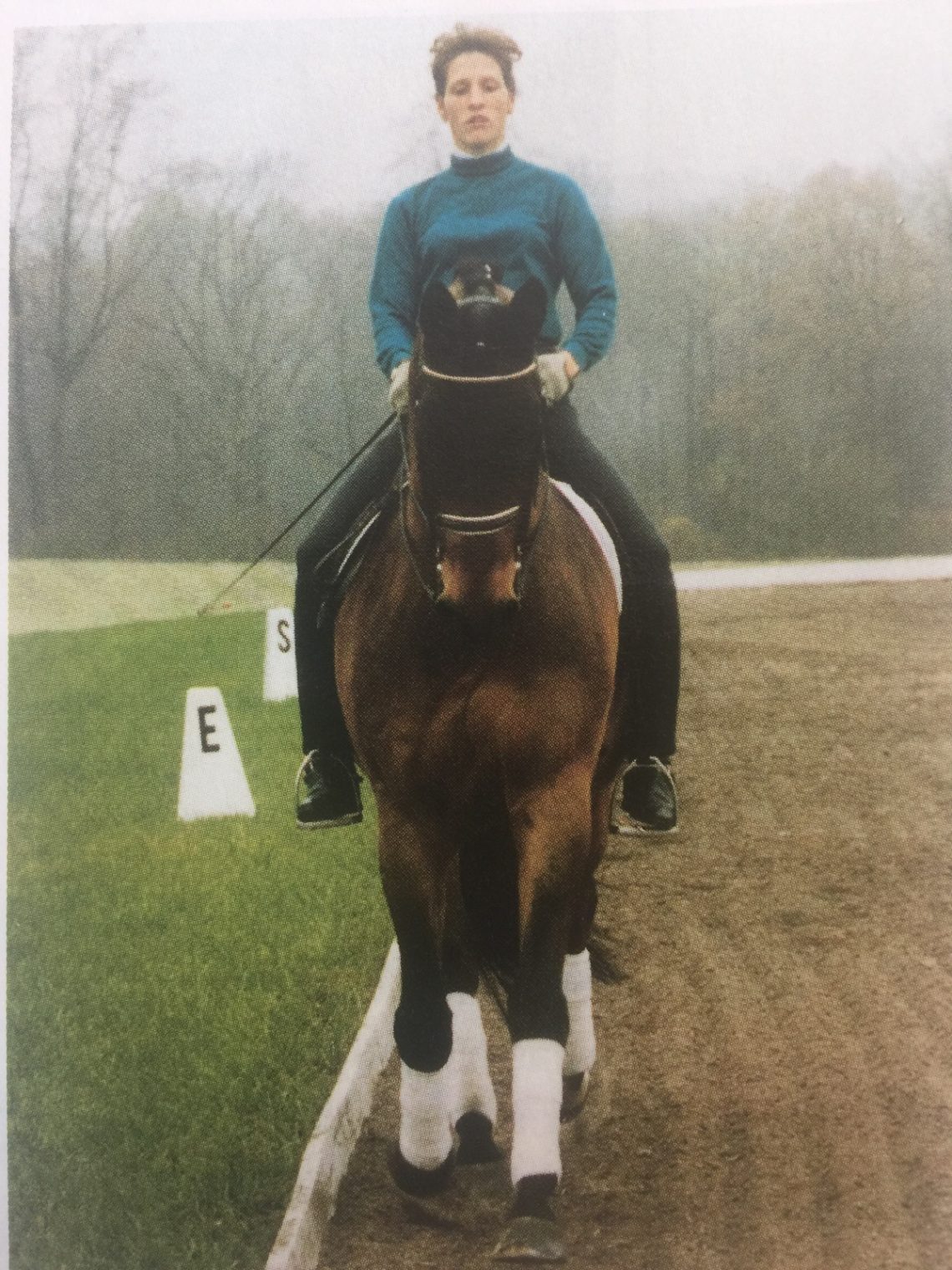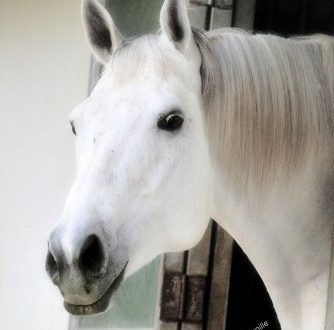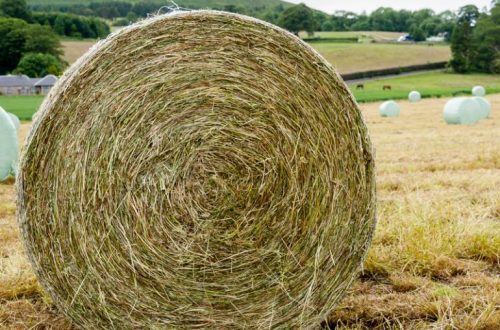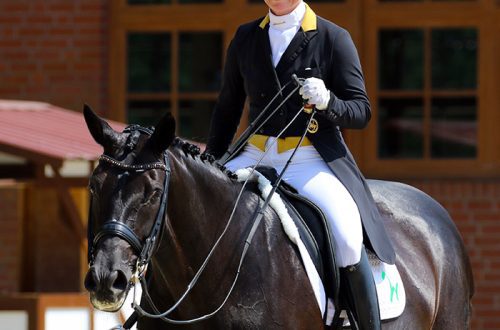
Rider asymmetry correction
Rider asymmetry correction
I would like to start by defining asymmetry. It is very simple to formulate it: it is a lack of balance in the case when the body of the rider is not positioned correctly on the horse, and the weight is not evenly distributed. I will immediately note that when something causes the rider’s weight to be distributed unevenly, the rider’s seat will not be evenly balanced, or symmetrical. When the rider is not symmetrical on the horse, the horse has to compensate for the extra weight on one side. Imagine yourself with a backpack on your back. If packaged correctly, it will feel light and comfortable to wear. If not, then you will have to adapt to the backpack, and your gait will change.
The moment you “pack” your body on the horse, its gait changes. But when you correct the asymmetry in your body and make sure that your weight is evenly distributed, the horse starts to move correctly. She lowers her head, her back begins to rise, and her movements become more free.
Usually the cause of asymmetry is not the skeleton. People tend to blame him for everything. Asymmetry most often results from the fact that the muscles on one side of the body are more enslaved than on the other. I came across people who told me that one of their legs was shorter than the other, but when we released muscle tension, the legs became the same.
Finding your asymmetries
If the weight is evenly distributed, the rider will sit symmetrically on the horse, but finding a rider who is completely even and “square” is difficult. Most people don’t realize that they are not symmetrical until someone prompts them and points it out. Remember that the way you walk or the way you ride a horse is a matter of habit, and our habits are comfortable for us. When you first align and find the right balance, you may feel scared and uncomfortable because you used to drive asymmetrically.
Take a moment to think about your riding. Do you ride with uneven stirrups, one shorter than the other? Does your saddle shift to one side while exercising or riding? Now think about how your horse is walking. Does it seem to you that it hangs on one rein or is heavy on one hand, more than on the other? Is her gain at the trot uneven? When the horse stops, does he put one hind leg back? Doesn’t she want to soften at the back of her head and round her back? All of these could be signs that you are sitting asymmetrically. in the saddle
Key issue, which you can ask yourself: how are your sit bones on the saddle?
The sit bones are whereоmost of your weight is connected to the horse. Are they evenly spaced on both sides of the horse’s spine? Is your spine above her spine? These things are difficult to determine on your own, so enlist the help of an instructor. As you walk or trot away from him, he will be able to gauge whether your spine and hips are shifting to the side.
Your hip joints also need to be equally flexible or you won’t be symmetrical. Your torso should be level with your sitting bones. You will know that you are sitting correctly by the way your muscles relax and by the feeling of balance. When you have this symmetry, you will be able to use your seat and arms more evenly and effectively.
Many people push one of their sitting bones forward due to muscle tightness in the thigh. The difference may be only a couple of millimeters, but it will make a huge difference to the horse. You may feel that you are sitting crooked when you return the ischium to where it should be – your sensations will change.
Release muscles from tension
Suppose your right leg, like most people, is stronger than your left. The right side becomes pinched and shortened. As you ease into the trot, you will lift to the right because your right leg is more developed, you could call it a “working” leg. You will return to the saddle to the left, which will cause the saddle to move to the left. It may seem to you that it should be the other way around because you are pushing against the saddle with your stronger right leg, but in fact, more pressure is applied to the saddle (on its left side) when you sit down. You also tend to lose your left stirrup more often because you’re leaning more on your right.
So what do you need to do? Lengthen your right side and relieve muscle tension!
A way to help you release muscle tension and feel one side of your body is to ride with one arm in the air. Try doing the following:
If you raise your right arm, your weight will diagonally pass through your body into your left seat bone and left leg. Your left seat bone has probably not touched the saddle for a whileand you will most likely be surprised to find it. You now have two sitting bones evenly spaced on the saddle. If you lose this feeling, you can bring it back at any time by simply holding your hand up. Eventually you will learn to align just by thinking about it.
become symmetrical
There are two important words in my vocabulary – “realize” and “allow”. You must be aware of the changes you need to make and allow your body to change. If your horse is enslaved somewhere, check yourself first. Once you recognize the asymmetry, you can correct it.
I like people who “go through” their bodies piece by piece. “Walk” through your body and check your jaw, neck, shoulders, elbows, etc. In doing so, you will need be awarewhat is happening to your body, rather than trying to fix something. When you simply become aware of a part of the body, it can relax or correct it on its own. Do something else, and then check your body again, the situation will probably already improve. This check will become automatic over time.
Exist exercisewhich I call “comparable parts”. When you have a body part enslaved, the same body part will become enslaved in a horse. So if you have a tight hip, the horse will also have a tight hip. Her back leg will not move freely. If you have a stiff knee, the horse will have a similar knee joint. If you have a tight neck or shoulder, the horse’s neck or shoulder will also be tight. Lock your jaw? The horse will make his own! Think about your body and about the equivalent parts of a horse’s body. If something goes wrong, check yourself first.
Riders need to better understand their physiology and skeletal anatomy (usually we know more about horse anatomy). Riders don’t care about their bodies. When we get injured, we often work despite the pain. If a horse gets injured, we take care of it, trying to solve its problems.
The photo above shows the horse’s response to a correct and symmetrical rider seat. Notice how the rider position allows the horse to move freely and be “square”. Compare the position of the head and legs with the photo below, where our rider deliberately sat asymmetrically. Her shoulders, butt and legs are not “square”. Her right leg is higher than her left, and her right shoulder is lowered. Her muscles on the right are tight. The horse must compensate for the impact of the “crooked” rider, his brain and body react to it. The horse is confused and does not know how to place the legs correctly: the forelegs are widely spaced, and the hind legs are crossed. The horse’s body is tense and the head is tilted.
Below I will provide answers to the most frequently asked questions:
When did you realize that symmetry is important for riding?
“As a young rider, I learned about some of the problems with my posture that today I would call asymmetry. My horses rode badly and the trainer said that their movement and work was the result of my landing. A good seat is a quality that a rider must have in order to stay with the horse under all circumstances, regardless of the horse’s reaction to any factors. The quality of landing depends not on strength, but on balance.
What should be done first if the horse is not moving well?
You need to go through your body’s “checklist”. When in training I hear a student say, “Oh, my horse is leaning on my left rein,” my reaction would be, “Correct your posture.” There is a 90% chance that the horse is not performing well because the rider has a bad seat. The French masters of dressage have a saying: “The horse does not work well, because the rider does not deserve it, because he interferes with it.”
What happens when a rider is asymmetrical or has a wrong seat?
– If the rider does not correct his position in the saddle quickly enough, then it becomes a habit and the horse learns to lean on the rider. But the horse is not to blame. If you look at the horses playing in the pasture, you will see that they are absolutely perfect. They stay in balance. Horses become clumsy when we become a dead weight on their backs and get in their way. But, if we learn to do the right gymnastics, properly prepare ourselves, and learn to follow the horse, then we can stay in balance, just like the horse.
How can a rider train out of the saddle?
– In any sport, you need to work on physical fitness and coordination. The Greeks realized 6000 years ago that the first thing we must do is learn to stay with the horse. And the only way to do this is to stretch and prepare your body. Only then will you be able to follow the horse no matter what it does. In Europe, I was taught to do all kinds of stretches and warm-ups before getting into the saddle. This is necessary to make the muscles flexible. This is the only way to follow the movements of the horse. The rider should spend a few minutes kneading and stretching each muscle group to improve flexibility (longitudinal and lateral). Many riders forget to work on their ankles, and these are shock absorbers… If you are tight at the ankles, your knees will lock up (and then your hips). You will not be able to follow the movement with your seat. To warm up, you can put a brick on the ground and stand on it with your toes, dangling your heels. This will stretch the muscles around your ankle. Any kind of stretch that makes you feel more flexible will help improve your riding!
Sally Swift (source); translation Valeria Smirnova.





